Your most productive day at work is achievable; you just need a little help. By exploring the best workload management tools, you’ll uncover productivity solutions that trickle down to your whole team.
Why use workload management software? Because manually tracking your team’s work and productivity is an unnecessary hassle. With workforce management tools, you can detect burnout, optimize workloads, and ensure your team completes work on time without constant check-ins.
Picking the right tool is vital. Luckily, we did the heavy lifting for you. We’ve found the top workload management tools, listed their key features and why they stand out, and researched their pricing plans. All that’s left for you to do is pick your favorite tool.
- What is workload management?
- Best workload management tools
- 1. Hubstaff: Best for all-in-one workforce management
- 2. Asana: Best for project management
- 3. Trello: Best for budget and simplicity
- 4. ClickUp: Best for customization
- 5. Wrike: Best for creating charts
- 6. Jira: Best for Agile workflows
- 7. Monday.com: Best for collaboration
- 8. ProofHub: Best for team communication
- 1. Hubstaff: Best for all-in-one workforce management
- What can team workload management tools do for you?
- How to pick the right workload management tools
- Time to optimize your workload
The TL;DR? There are tons of great tools out there. If you’re looking for a quick overview, check out this table.
| Tools | Best for | Features | Pricing |
| Hubstaff | All-in-one workforce management | Workforce management Time tracking Activity levels Productivity Insights Payroll management Integrations | Free plan, paid plans starting at $7 per user/month |
| Asana | Project management | Task management Project views Team collaboration Integrations | Free plan, paid plans start at $10.99 per user/month |
| Trello | Budget and simplicity | Task management Drag-and-drop interface Attachments and links Real-time collaboration | Free plan, paid plans start at $10 per user/month |
| ClickUp | Customization | Task management Customization Time tracking Sprints and goals | Free plan, paid plans start at $10 per user/month |
| Wrike | Creating charts | Task management Custom charts Collaboration Time tracking | Free plan, paid plans start at $9.80 per user/month |
| Jira | Agile workflows | Agile project management Customizable workflows Reporting Integrations | Free plan, custom pricing available for teams |
| Monday.com | Collaboration | Task management Collaboration tools Visual project boards Integrations | Free plan, paid plans start at $12 per user/month |
| ProofHub | Team communication | Task and time management Team communication Custom roles Reporting | Plans start at $45/month |
Boost your team’s efficiency with Hubstaff's productivity tools
What is workload management?
Workload management is the strategic planning, allocation, and management of an organization’s tasks and responsibilities. It ensures that work is distributed evenly to increase efficiency without compromising the mental health of employees.
Effective workload management involves assessing the available resources, understanding the scope and complexity of tasks, and assigning work in a way that:
- Optimizes productivity
- Minimizes bottlenecks
- Prioritizes employee well-being
- Helps maintain a healthy balance of responsibility
Best workload management tools
Are you feeling overwhelmed by your workload? We get it. Workload management tools are the key to improving your workflow and automating manual work. Here are our favorite tools.
1. Hubstaff: Best for all-in-one workforce management
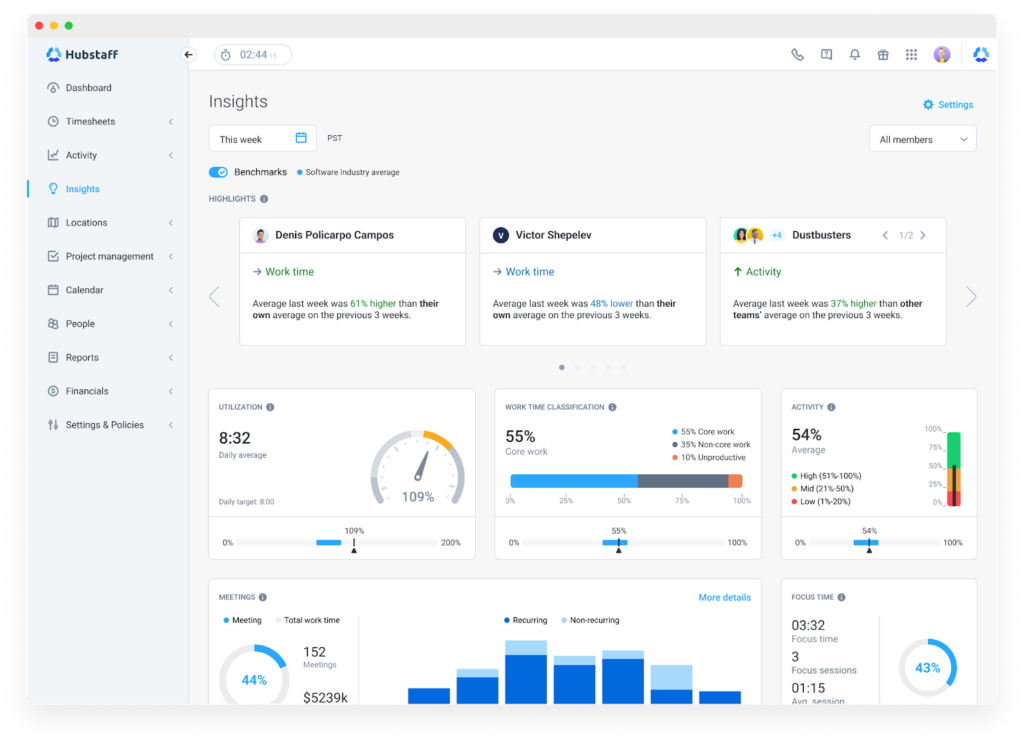
Obviously, we have to plug our tool. Still, you can trust that we know a thing or two about workforce management. We created these workforce management features to solve issues our team and our customers had with managing time and increasing productivity.
Key features
- Workforce management. Hubstaff enables employee scheduling that is easy to use. Plus, you can set weekly and project budget limits. The app notifies you when a team member gets close to their limits so you can adjust accordingly.
- Time tracking. Hubstaff functions as a comprehensive time tracker with online and offline time tracking. The second you start tracking, time tracking data populates detailed timesheets.
- Payroll management. Use these timesheets to pay teams with our built-in payment features. Or, choose one of your favorite payment integrations to process payroll.
- Activity levels. Hubstaff calculates real-time activity levels based on keyboard and mouse inputs. Activity levels give you a helpful baseline for each job title. Changes can be a warning sign that you need to check-in.
- Productivity Insights. Manage your team and fight burnout with the Insights add-on. As a manager, you can access detailed productivity metrics, like performance trends and industry benchmarks, to simplify workload management.
- Integrations. Hubstaff offers 30+ integrations, including project management tools, accounting software, and customer support integrations.
Pricing
- Free plan
- Starter: $7 per user/month
- Grow: $9 per user/month
- Team: $12 per user/month
- Enterprise: $25 per user/month (annual pricing only)
Need more advanced features? Hubstaff also offers extra add-ons that boost its primary team management features:
- Tasks ($3 per user/month)
- Insights ($2 per user/month)
- More screenshots ($3 per user/month)
- Corporate add-on ($3 per user/month)
2. Asana: Best for project management
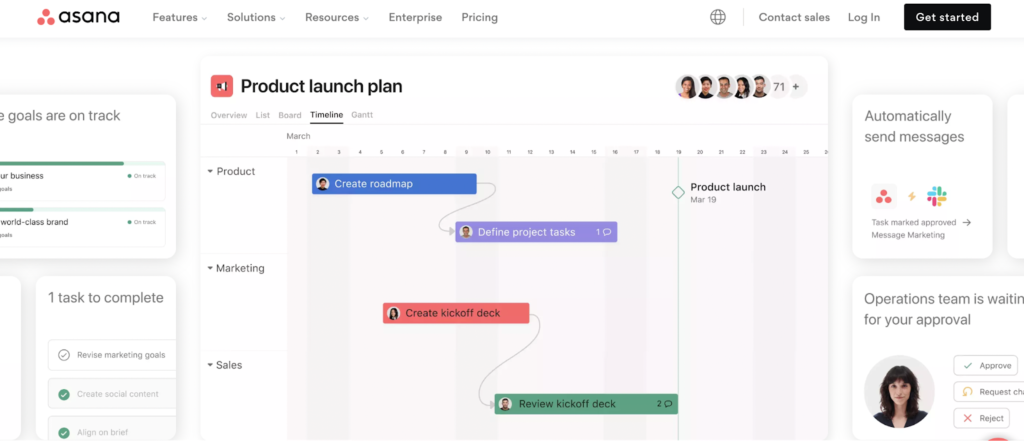
Asana is a powerful project management tool with plenty of features. It is, first and foremost, a project and task management platform. That said, its features lend themselves to workload management.
Asana belongs on this list because it is easy to use, has excellent communication features, and is a powerful tool for project management. Asana’s workload management isn’t a built-in feature but is facilitated by its ability to organize complex projects into an array of different views, set project timelines, and track progress for ongoing tasks.
You can add custom information to each task that details hours spent, project completion percentage, and more.
Key features
- Task management. Create tasks, assign team members, set priorities, and add deadlines to create an organized workflow. You can also break tasks into subtasks for larger projects.
- Project views. Asana offers multiple project views, including calendars, task lists, timelines, Gantt charts, and Kanban-style views. You can shift seamlessly between them based on how you like to work.
- Team collaboration. You can leave comments directly on a task, tagging your team to ensure they get your message and are directed to the task you’re referencing. Paid plans allow you to create custom rules and auto-assign team members for different project stages.
- Integrations. Connect Asana with tools like Google Drive, Slack, Dropbox, and more.
Pricing
- Personal plan: Free
- Starter: $10.99
- Advanced: $24.99
- Enterprise: Contact Asana for pricing
3. Trello: Best for budget and simplicity
We wanted to include a range of products on this list, from complex to simple, and Trello is the most simple and easy-to-use tool we’ve found. This is an excellent pick if you’re just starting with workload management, managing a small team, or working as a freelancer.
Key features
- Task management. Manage tasks by building custom boards, lists, and cards. Plus, create custom labels and set due dates for tasks.
- Drag-and-drop interface. Quickly move tasks through a workflow using Trello’s drag-and-drop technology. Moving these tasks can represent each element’s stage in the project.
- Attachments and links. Attach documents, links, images, and more to your Trello card to give your team all the necessary information.
- Real-time collaboration. Users can simultaneously work on the same tasks and leave comments on individual cards for their team.
Pricing
- Free plan
- Standard: $5 per user/month
- Premium: $10 per user/month
- Enterprise: Contact Trello’s sales team for pricing
4. ClickUp: Best for customization
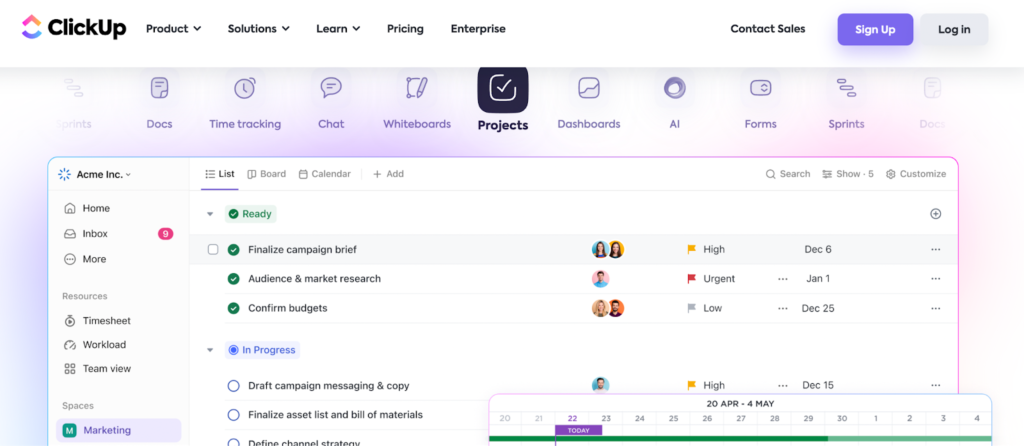
ClickUp markets itself as one tool to replace them all. Their project management features are impressive, and you can easily use this tool to manage your workload with minimal effort on customization.
What I like most about ClickUp is its user interface. To me, it’s easily the most eye-catching tool on this list.
Key features
- Task management: ClickUp’s goal-setting functionality and customizable fields provide a structured approach to managing tasks. The incorporation of Docs and Wiki features allows you to keep process documentation in the same tool you work in.
- Customization: The platform’s customizable views allow users to tailor their workspace to suit their preferences.
- Time tracking: The built-in time tracking feature helps managers monitor productivity and manage workloads.
- Sprint and goal planning: Sprint and Goals features and an efficient chat and notification system lets you streamline your team’s workload and boost productivity.
Pricing
- Free plan
- Unlimited: $10 per user/month
- Business: $19 per user/month
- Enterprise: Contact ClickUp for a quote
5. Wrike: Best for creating charts
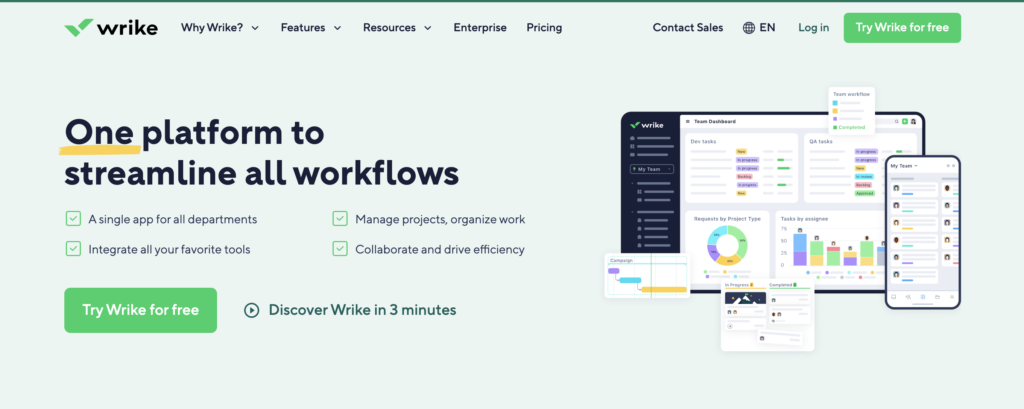
Wrike is a workload management tool that offers a comprehensive platform for task organization and project tracking with custom charts. If you’re a visual person, you’ll love managing your team’s workload with Wrike.
Key features
- Task management: With Wrike, you can easily organize tasks, set priorities, and keep your team on the same page.
- Custom charts: Wrike’s custom charts are great visual representations of project timelines.
- Collaboration: Wrike offers powerful collaboration features, like real-time document editing, discussion threads, and file sharing.
- Time tracking: Wrike’s time tracking feature allows users to monitor the time spent on tasks and projects — which is crucial for managing workloads and ensuring that assignments are on track.
Pricing
- Free
- Team: $9.80 per user/month
- Business: $24.80 per user/month
- Enterprise: Contact Wrike for enterprise pricing
6. Jira: Best for Agile workflows
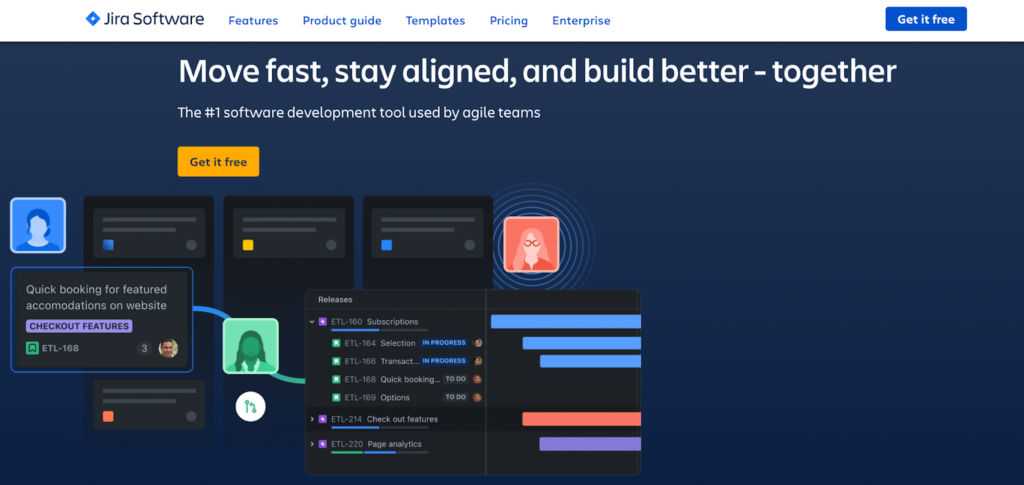
Jira stands out, particularly as an Agile project management tool. It’s definitely more on the robust, advanced end of the spectrum, making it a better fit for more technical teams with Agile methodologies.
Key features
- Agile project management. With powerful task management abilities and seamless integration with Agile methodologies, Jira is the best tool on this list for Agile workload management.
- Customizable workflows. Jira allows users to create and visualize workflows using Scrum or Kanban boards.
- Reporting. Jira offers advanced and automated reporting features, critical for managing workloads and tracking project status.
- Integrations. Jira has a wide range of integrations, allowing users to connect with their favorite tools and platforms seamlessly.
Pricing
Free plan, custom pricing available for teams.
7. Monday.com: Best for collaboration

Using Monday.com for workforce management empowers teams to streamline operations and enhance productivity. Like ClickUp, Monday.com’s strengths lie in its intuitive and customizable interface. It’s easy to use, aesthetically pleasing, and relatively simple to set up.
Key features
- Task management. Monday.com offers advanced task management and customizable workflows that simplify workload management. Managers can assign tasks, set due dates, tag team members, and update project progress easily.
- Collaboration tools. The platform’s impressive collaborative features include discussion threads, tagging, file sharing, and more. Their communication features are where they stand out from the rest.
- Visual project boards. Monday.com’s visual project boards and timeline views provide a clear overview of tasks, deadlines, and resource allocation, enabling efficient workload management.
- Integrations. Monday.com’s integrations with popular tools allow for seamless connectivity and workflow automation.
Pricing
- Free plan
- Basic: $12 per user/month
- Standard: $14 per user/month
- Pro: $24 per user/month
- Enterprise: Contact Monday.com for pricing
8. ProofHub: Best for team communication
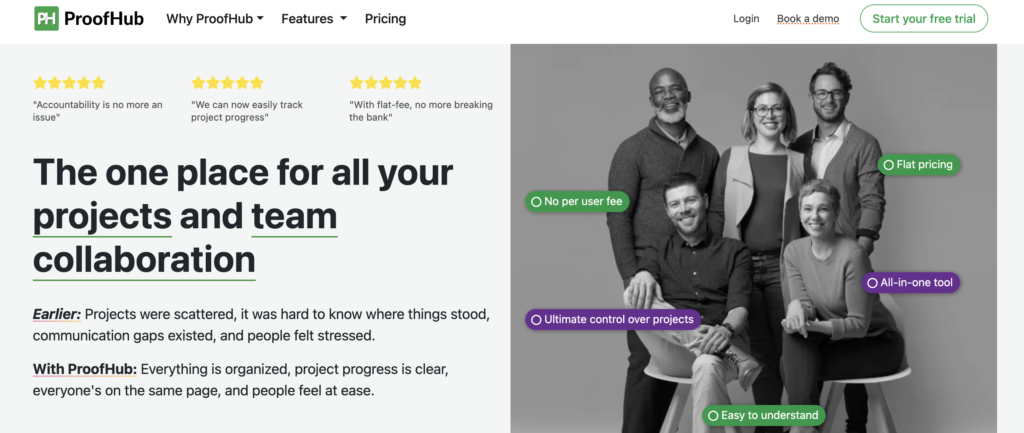
ProofHub is a workforce management tool that streamlines collaboration and enhances team communication. With powerful task management abilities, teams can manage and prioritize tasks effortlessly. Seamless file sharing and a centralized calendar keep everyone on the same page.
Key features
- Task and time management. Manage tasks with Gantt charts to visually represent project timelines. Then, utilize time tracking features to ensure accurate billing and efficient project management.
- Team communication. The integrated online discussions feature fosters real-time communication, reducing the need for lengthy email threads. ProofHub’s Notes help you leave quick ideas and feedback.
- Custom roles. Custom roles allow for tailored access, enhancing security and adding to ProofHub’s impressive collaboration abilities.
- Reporting. In-depth reports provide managers with insights into project progress without manual check-ins.
Pricing
- Essential: $45/month
- Ultimate control: $89/month
What can team workload management tools do for you?
Workload management can prevent overworking, improving efficiency and employee well-being. With the right tool, managing multiple projects simultaneously or automating recurring tasks is simple.
But don’t just take our word for it. Here are some statistics you should know:
- On average, organizations waste 9.9% of every dollar due to poor project performance, according to a study by the Project Management Institute.
- A study by PWC found that 77% of high-performing teams use project management software to handle their tasks.
- According to SHRM, 94% of business leaders say that people analytics elevates their HR process.
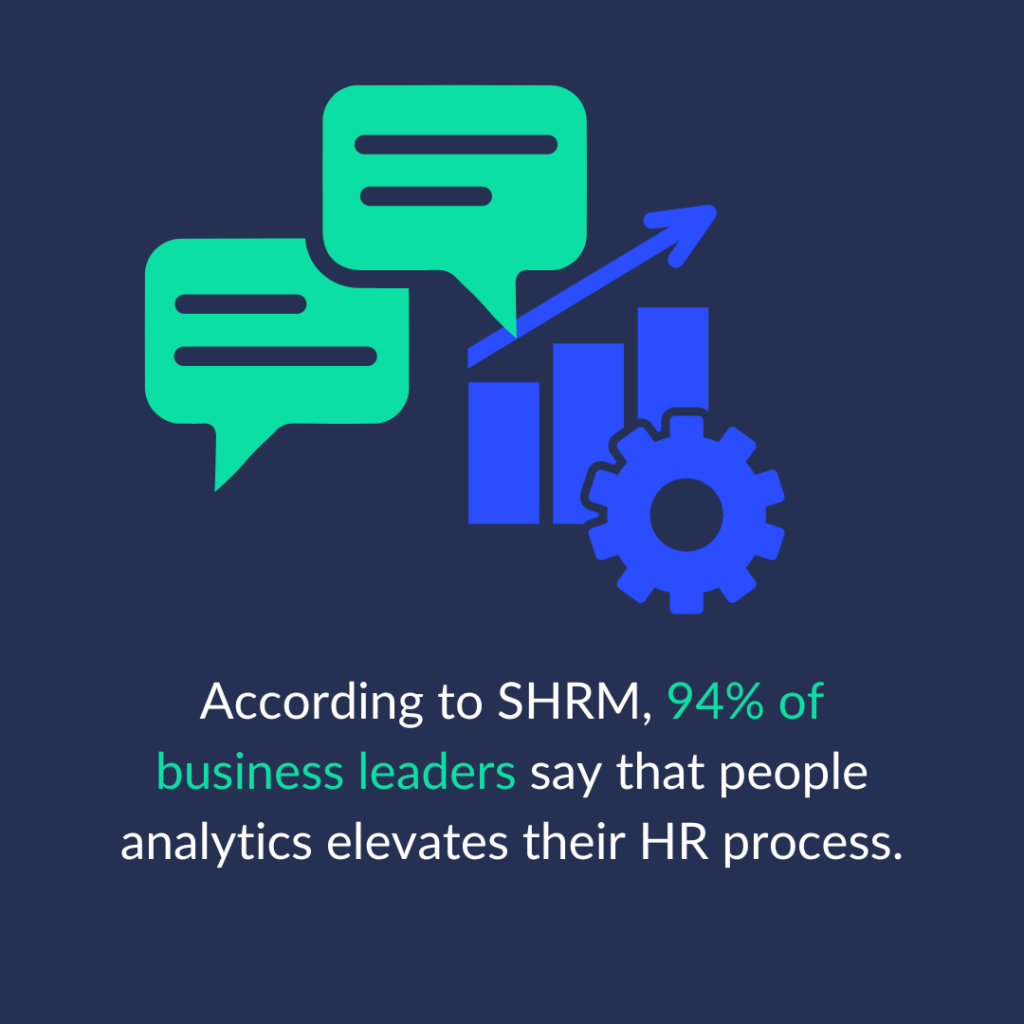
- In a market research report, Capterra found the top benefit of using a project management tool is accurately estimating a project timeline. We all know the more accurately you estimate a timeline, the less money you waste.
Let’s move on to picking your tool.
How to pick the right workload management tools
- Talk to your team. Identify your team’s needs and ensure you pick a tool everyone is on board with. The best workload management tool for managers might not always be the tool that employees want to use.
- Look for scalability. You need a tool to scale services and pricing as you grow. Tools that offer pricing plans for teams ranging from small businesses to large enterprises will support you as you grow.
- Ease of use. There is a delicate balance to finding a powerful tool that is also easy to use. Advanced customization features are nice, but ease of use should be top of mind when picking a tool. Try out a demo or free trial to see how easy it is to set your team up with the tool and use it daily.
- Integrations. Much like the real estate motto, “location, location, location,” your motto when looking for software should be “integrations, integrations, integrations.” You need a tool that seamlessly integrates with your other software so you don’t spend time manually transferring data back and forth.
- Communication features. The ability to comment, tag, and collaborate with your team within your assigned workload management system is invaluable. The tool should have straightforward communication features that function similarly to Slack or Teams, so team members can easily let their team know how tasks progress.
- Pricing. Money matters when it comes to your workload management tool. When used correctly, these tools can pay for themselves with the time they save your team. That said, you’ll need to watch for expensive add-ons and paywalls protecting the features you want to use.
- Security. With project and task-related data sensitivity, finding tools with advanced security features is critical. Look for features like data encryption, access controls, and data backup.
Time to optimize your workload
Hopefully, you now have a rough idea of which workload management tool will work best for your team. It’s time to sign up for some demos and try a free trial or two to see which is a good fit for you.
Finding the right workload management tool for your team can change the way you work, increasing productivity and reducing burnout.
Have other tools you’re obsessed with? We want to hear about it. Drop your favorite workload management tools in the comments.
Most popular
The Critical Role of Employee Monitoring and Workplace Security
Why do we need employee monitoring and workplace security? Companies had to adapt fast when the world shifted to remote work...
15 Ways to Use AI in the Workforce
Whether through AI-powered project management, strategic planning, or simply automating simple admin work, we’ve seen a dramatic...
The AI Productivity Panel: Lessons From Leaders on What’s Working (and What’s Not)
When I moderated this AI productivity panel, I expected a solid conversation. What I didn’t expect was the flood of real-world i...
Employee Performance Dashboards: Templates, Tools, and Best Practices
Keeping track of how your team’s really doing can be tricky. Spreadsheets pile up, one-on-ones only tell part of the story, and...




